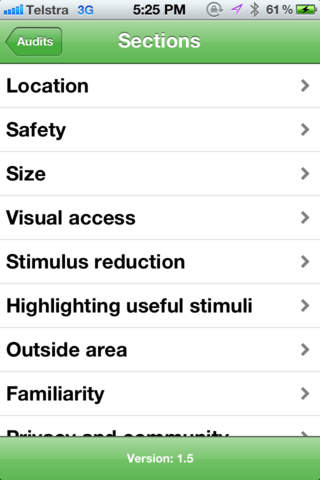
This app will guide you through an assessment of the strengths and weaknesses of buildings used to accommodate people with dementia. It provides you with a choice of using the Environmental Assessment Tool (EAT) designed for facilities where relatively mobile people with dementia live, or the use of the Environmental Assessment Tool – Higher Care (EAT-HC) for buildings accommodating less mobile people with dementia.
You will be invited to take photographs of aspects of the building that illustrate important features of its design, both good and bad. These will be built into a comprehensive report that will enable you to see at a glance the areas that require improvement and to begin planning how to improve them. The report will be structured around ten principles of design that have been found to be important in the reduction of confusion, agitation and depression while improving way finding, social interaction and engagement with life. These principles are:
1. Unobtrusively reduce risks
2. Provide a human scale
3. Allow people to see and be seen
4. Manage levels of stimulation – Reduce unhelpful stimulation
5. Manage levels of stimulation - Optimise helpful stimulation
6. Support movement and engagement
7. Create a familiar place
8. Provide a variety of places to be alone or with others – In the unit
9. Provide a variety of places to be alone or with others – In the community
10. Design in response to vision for way of life
This service is provided by Dementia Training Australia which is supported by the Australian Government. There is no charge for its use. Education on the use of the built environment in the care of people with dementia is also available from Dementia Training Australia. See www.dementiatrainingaustralia.com.au for more details.



